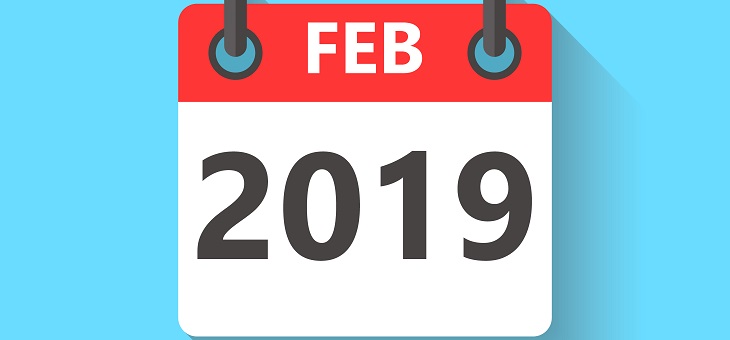We’ve all done it … made New Year’s resolutions that only last a day. Or, if you’re especially dedicated, a week after 1 January.
We might set them with the best of intentions, but more often than not, the promises we make to ourselves fall by the wayside. And we wind up where we started, with an extra dose of guilt for ‘not seeing it through’.
If you reached the end of 2018 with the feeling that ‘something’s got to change’, then why not change the way you view New Year’s Resolutions or goal-setting in general?
For starters, let’s look at the timing of our resolutions, and why you might be better off waiting until February to kick things off.
The clock strikes midnight and it’s the first day of the New Year. That can be a particularly tricky time to create healthy habits and break ‘bad’ ones.
You might have been tired or hung over from the night before. You might have been on holidays and not in your usual routine, or even in your own home town. You might have been recovering from a busy festive season – or a busy year’s end – and needed a moment to take a breath, rather than launch into the next project of ‘New Year, New Me’.
The fact is, scheduling our New Year’s resolutions to start precisely in the New Year can set us up for failure.
That’s why February can be better.
Once February comes around, for most of us, the jingle-jangle of the festive season has settled down and life has returned to some semblance of ‘normal’.
We’re more likely to be back at work or studies, or back to our daily duties and into the swing of our everyday lives.
But a key part of your New Year’s resolution is proper planning. You need to put yourself in the best starting position, rather than launching straight away and trying to sprint to the finish line.
Try out a few different variations of your goals, dip your toe into the water and see what works for you.
For example, if your goal is to ‘exercise more’, spend a few weeks trying it out, and testing how it will work. Is three times a week doable? Too much, too little? What time of day works best? Visit your local gym if you’ve not been there before, explore your local parks for walking tracks, or try out a few exercise classes in your suburb. That way, you’ll have more options and be more familiar with what can keep you on track and what might lead you astray.
You’ll be in a position of power, armed with experience and know-how and good groundwork underfoot.
A key part of keeping your New Year’s resolutions is realising that change is a process, rather than a single step.
The Jean Hailes Magazine article, The power of positive change, explains how setting yourself up for success is not as simple as picking a goal out of thin air. The three steps of making positive changes in life are to:
1. Set your goal
Set an overarching goal. Also, be sure to set smaller targets along the way that will encourage and help you reach your goal.
2. Address barriers
Address psychological and physical barriers. How are you going to think differently? What are you going to do differently?
3. Be flexible
Be flexible and adaptive. If things are not going to your plan, review and tweak it to make success more likely.
Published with the permission of Jean Hailes for Women’s Health. Visit jeanhailes.org.au
Did you make a New Year’s resolution? Are you on track or do you see merit in starting it in February once life returns to normal?
Related articles:
What drives Stephanie Alexander?
Meet our tireless advocate on ageing
What if we all had a ‘due date’?

